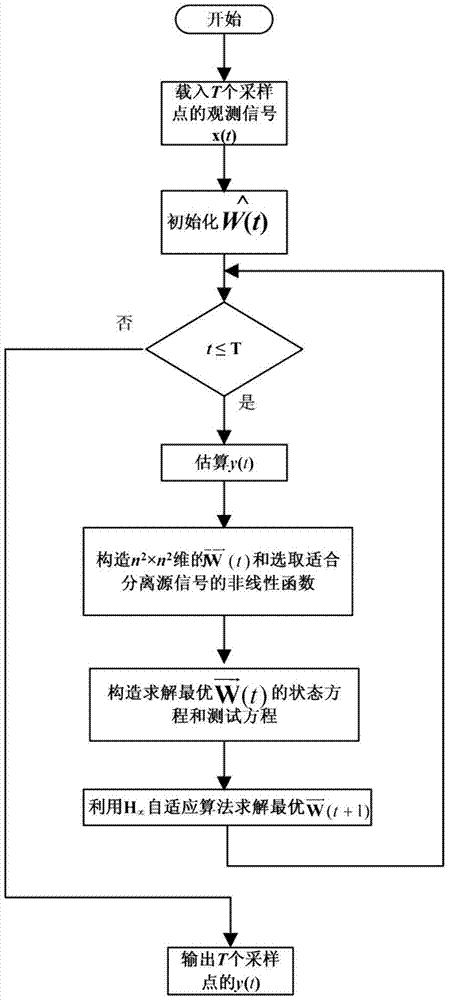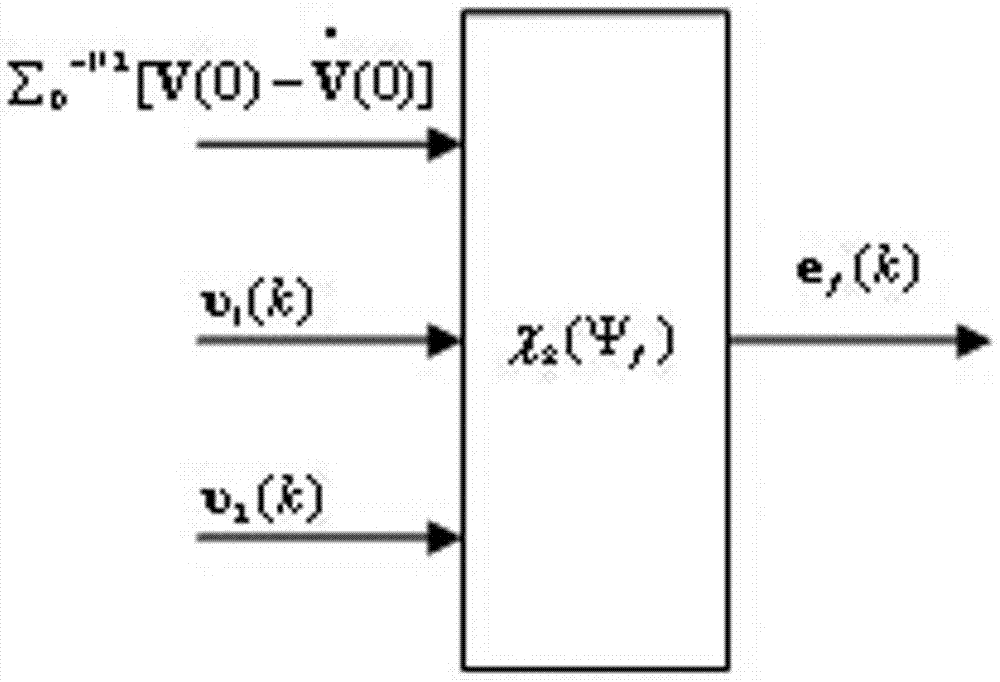NPCA-based post nonlinear blind source separation method
A blind source separation, non-linear technology, applied in the field of signal processing, can solve problems such as lack of constraints on the value range of the solution to be optimized, unsuitable separation of signals, and impact on stability.
- Summary
- Abstract
- Description
- Claims
- Application Information
AI Technical Summary
Problems solved by technology
Method used
Image
Examples
Embodiment Construction
[0065] The present invention will be further described in conjunction with the accompanying drawings and specific embodiments.
[0066] As a specific example, such as Figure 1 to Figure 3 Shown, a kind of post-nonlinear blind source separation method based on NPCA of the present invention comprises the following steps:
[0067] Step 1: Load the observed signals of T sampling points
[0068] T is the total number of sampling points of the observed signal, and t is the number of sampling points.
[0069] The specific implementation process of the step 1 is: n mutually independent zero-mean unknown source signals s(t)=[s 1 (t),s 2 (t),...,s n (t)] T , through an unknown instantaneous linear mixed system m linearly aliased signals after mixing Then through the reversible nonlinear function F(·)=[f 1 (·), f 2 (·),…, f m (·)] T Observable signal x(t) = [x 1 (t),x 2 (t),...,x m (t)] T , its formula is as follows:
[0070] ...
PUM
 Login to View More
Login to View More Abstract
Description
Claims
Application Information
 Login to View More
Login to View More - R&D
- Intellectual Property
- Life Sciences
- Materials
- Tech Scout
- Unparalleled Data Quality
- Higher Quality Content
- 60% Fewer Hallucinations
Browse by: Latest US Patents, China's latest patents, Technical Efficacy Thesaurus, Application Domain, Technology Topic, Popular Technical Reports.
© 2025 PatSnap. All rights reserved.Legal|Privacy policy|Modern Slavery Act Transparency Statement|Sitemap|About US| Contact US: help@patsnap.com



